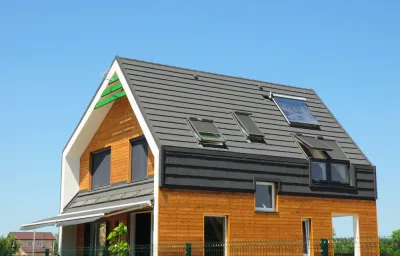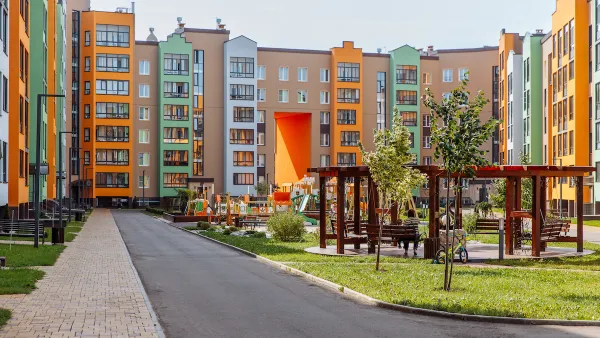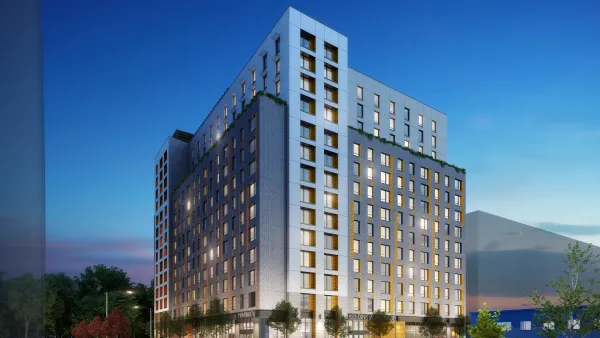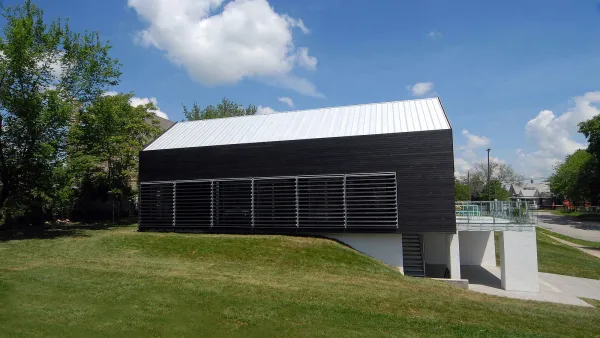Fresh interest in green building among investors, new incentives, and stricter building codes are making it more possible to include green building practices in affordable housing production.

Until recently, housing developers often faced a choice between lower building costs and a lower carbon footprint. “Simply put, the lower the carbon footprint, the higher the cost to build.” But now, writes Allen Feliz, “Thanks to a combination of incentives, the growing popularity of ESG investing and stricter building codes, affordable housing and decarbonization are no longer mutually exclusive.”
As Feliz notes, “Incentives defray costs for both new construction and retrofits. Fannie Mae and Freddie Mac, for example, have robust programs for green financing.” Meanwhile, “Innovations in the works should make decarbonization initiatives and sustainable building less costly. Ravi Malhotra, founder and president of ICAST, offers the example of heat pumps that provide more efficient cooling, space heating and water heating.”
According to the article, ESG (Environmental, Social, and Governance) investing is one boon to green building. “Notably, many of the most prominent investors and lenders in the affordable housing space have strict ESG mandates that influence their funding decisions.” In the near future, “Developers and investors may eventually have no choice but to decarbonize their portfolios and build sustainably, thanks to ever-stricter building codes. California has a Green Building Standards Code. New York City has implemented Local Law 97, which limits operational carbon emissions. Boston has enacted BERDO 2.0, which requires large buildings to reduce their energy and water use.”
Feliz points to a development in Garfield Park, Chicago, built by Preservation of Affordable Housing (POAH) that will met Passive House standards, a set of strict sustainability guidelines, as one example of how sustainable building and affordable housing can coexist.
FULL STORY: Affordable Housing and Decarbonization Are No Longer Mutually Exclusive

Analysis: Cybertruck Fatality Rate Far Exceeds That of Ford Pinto
The Tesla Cybertruck was recalled seven times last year.

National Parks Layoffs Will Cause Communities to Lose Billions
Thousands of essential park workers were laid off this week, just before the busy spring break season.

Retro-silient?: America’s First “Eco-burb,” The Woodlands Turns 50
A master-planned community north of Houston offers lessons on green infrastructure and resilient design, but falls short of its founder’s lofty affordability and walkability goals.

Test News Post 1
This is a summary

Analysis: Cybertruck Fatality Rate Far Exceeds That of Ford Pinto
The Tesla Cybertruck was recalled seven times last year.

Test News Headline 46
Test for the image on the front page.
Urban Design for Planners 1: Software Tools
This six-course series explores essential urban design concepts using open source software and equips planners with the tools they need to participate fully in the urban design process.
Planning for Universal Design
Learn the tools for implementing Universal Design in planning regulations.
EMC Planning Group, Inc.
Planetizen
Planetizen
Mpact (formerly Rail~Volution)
Great Falls Development Authority, Inc.
HUDs Office of Policy Development and Research
NYU Wagner Graduate School of Public Service




























